Content repackaging (also referred to as content repurposing and even content recycling) is turning existing content into new formats. More often than not, it involves turning text content into infographics, videos, e-books, etc.
I prefer the term “content repackaging” because it reflects the point of the tactic in the best possible way: you actually create a new content asset instead of merely finding a new purpose for old content.
For example, you can turn your how-to article into a visual flowchart or you can read your article as a podcast episode or even a mini-audiobook (especially if you are into writing fiction).
The main aspect of content repackaging is that a new content piece creates value of its own. It’s not merely about re-marketing your old content for new clicks and conversions. Content repackaging is the marketing tactic that aims at giving your audience a new way to consume information. It also involves expanding your own content with new research and up-to-date information.
Content rewriting and content repackaging are absolutely different things:
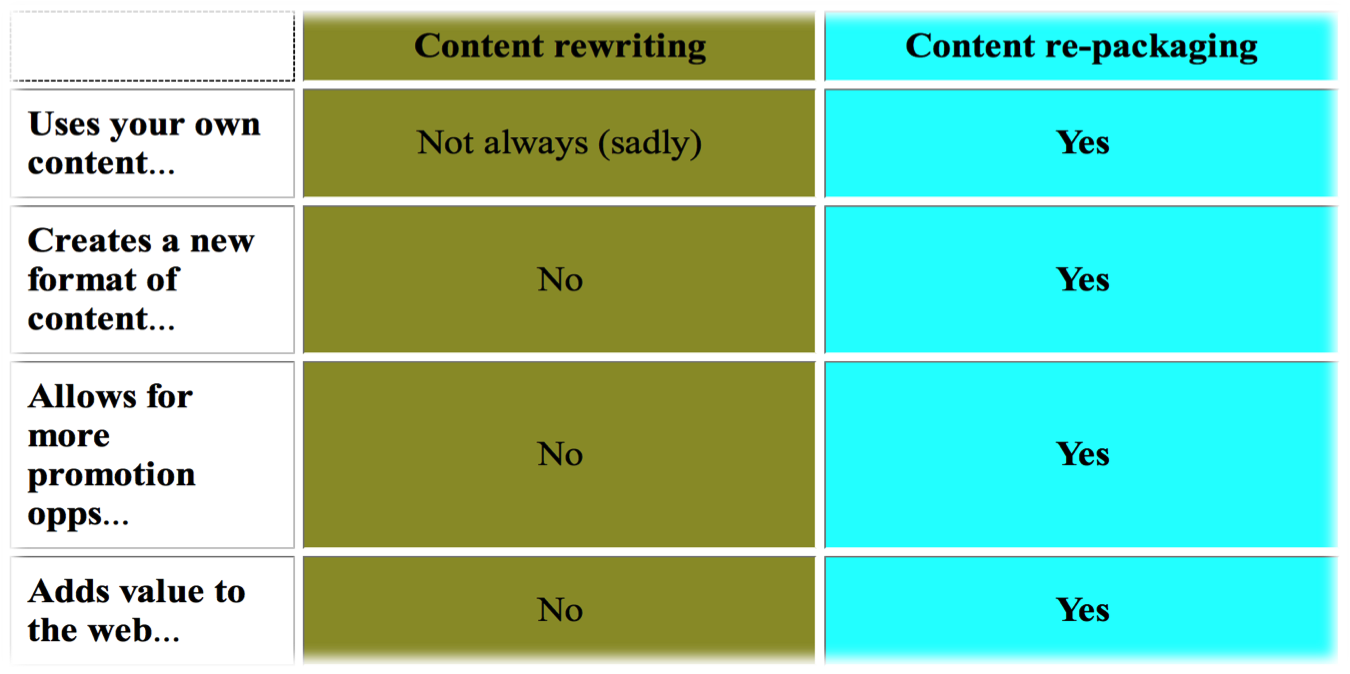
Content Repackaging Tools and Examples
Here are five ways to repackage an old article into a new content asset.
1) Infographics (Cheatsheets, Flowcharts, etc.)
In a world that is centered so much around social media, it is now necessary to provide content that has been broken down in order to be both easy to view and inviting to share. That’s why infographics are still such an effective content marketing format, giving a “bare-bones” visual representation of various core concepts.
- Turn this article: No Sound on YouTube: How to Fix It Quickly
- Into this infographic/flowchart:
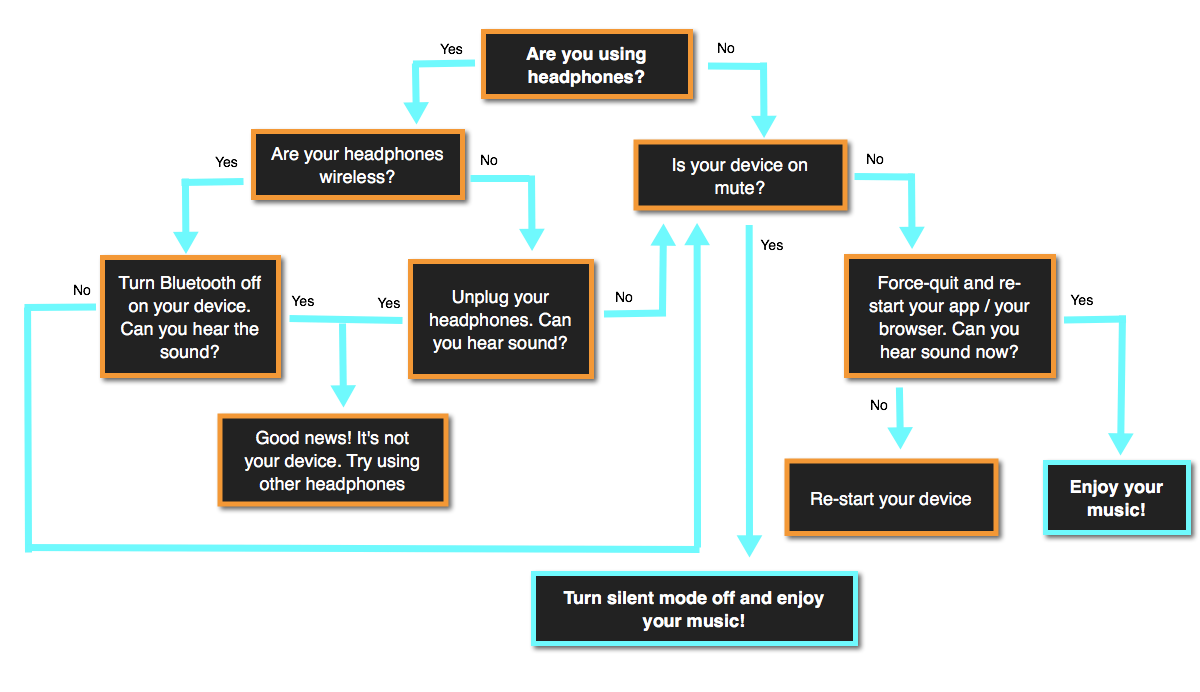
Infographics do very well on social sites all around the web, making them a great way to use old content in a new way to generate more value and draw new attention.
Tools:
- Here are five easy design tools to create infographics. These require no design skills and are either cheap or free.
- Additionally, tools like Piktochart and Infogr.am are easy to use and have a ton of features to customize visual assets to exactly what you want.
Dive Deeper: Why Infographics Are the Best Content Investment You’ll Ever Make
2) Slideshow Presentations
For repackaging on your own site or offering them on another site (or both), you can make a visual slideshow. Just break your post down into bullet points, then find a picture to use for each point.
These can be your own images/screengrabs or stock photos (either way, make sure they are high quality images). Offer some context by providing some information about each in the description, but let the photos do the rest of the talking for you.
- Turn this article: Here’s How to Create and Promote an Epic Article: Step by Step Cheatsheet #MyBlogU
- Into this SlideShare presentation: Create and promote an epic article cheatsheet
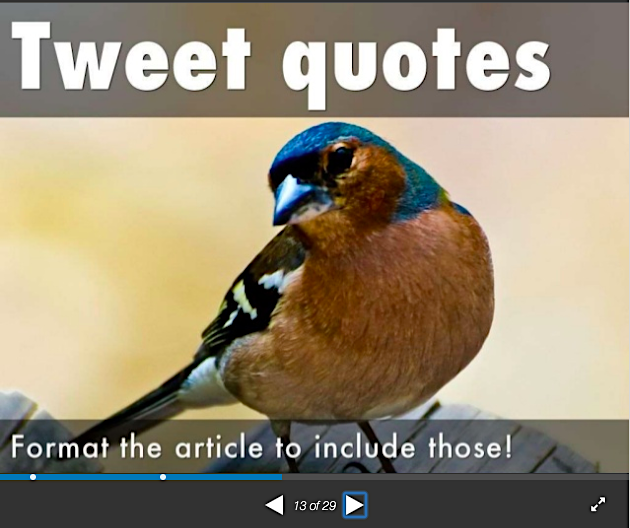
Note that most of those slides are clickable, which drive traffic to my sites and articles.
Tools:
- Haiku Deck is the tool I’ve been using for ages to create beautiful presentations. Here’s a detailed review of how I use it: Haiku Deck – Free Presentation App for iPad
Related Content: Omnichannel Marketing: Using the Content Sprout Method to Overcome Info Overload
3) E-books
One of the easiest ways to repackage content – in a free and fast way – is turning it into an e-book.
You can offer e-books for free, in exchange for a social media “like” or as a downloadable lead magnet on your site. If you want to stretch content, you can always go back into your old posts and find topics that can be made into a larger series. This requires some new writing on your part, but it is a great way to expand on points brought up in previous content.
- Turn this article: From Zero-Idea to a Hero Article in 6 Steps
- In to this downloadable e-book: Social Media Promotion Guide (it’s an expanded version of the public article, but it uses the article structure and screenshots)

Tools:
I use Google Docs to put my e-books together and design them, and then download them as PDF files. It’s quick and easy, and requires no design skills whatsoever. Google Docs has several great templates that you can edit and use to put together a nice e-book of your own.
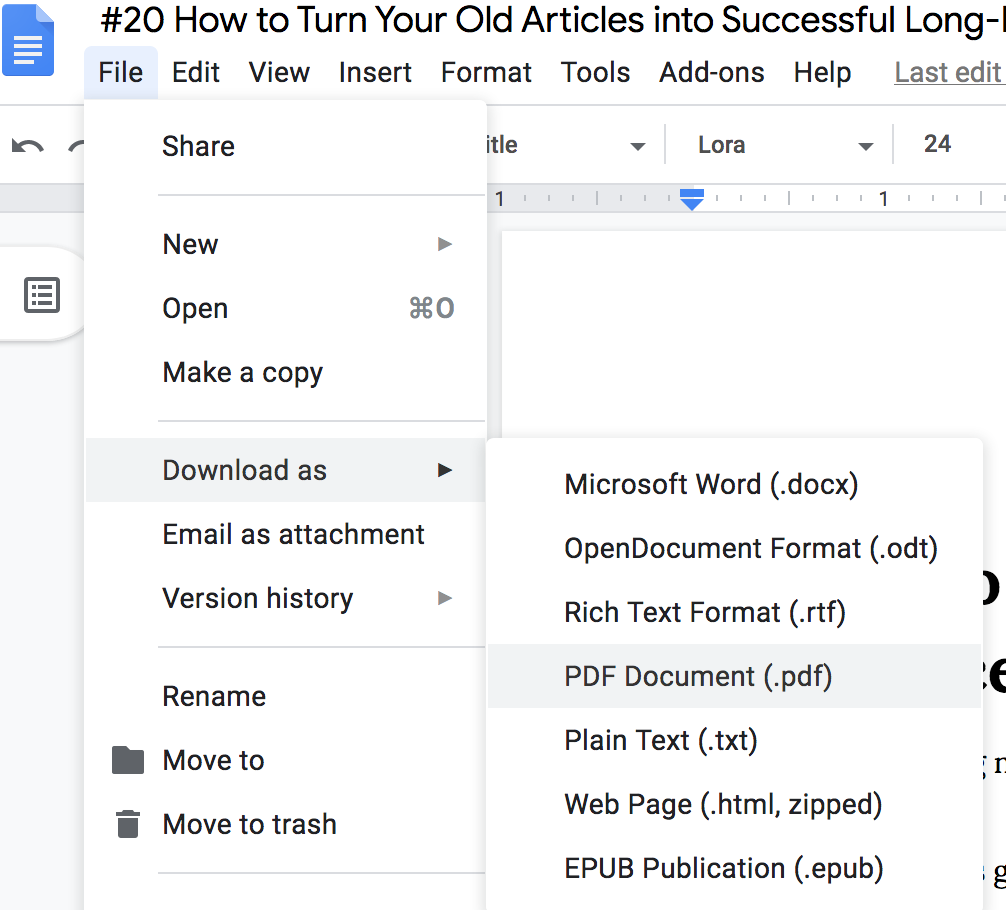
To expand your base article and provide more depth, use Text Optimizer, a semantic analysis tool that extracts related concepts and entities from Google search results. The tool pushes you to look outside the box and discover which angles still need covering:
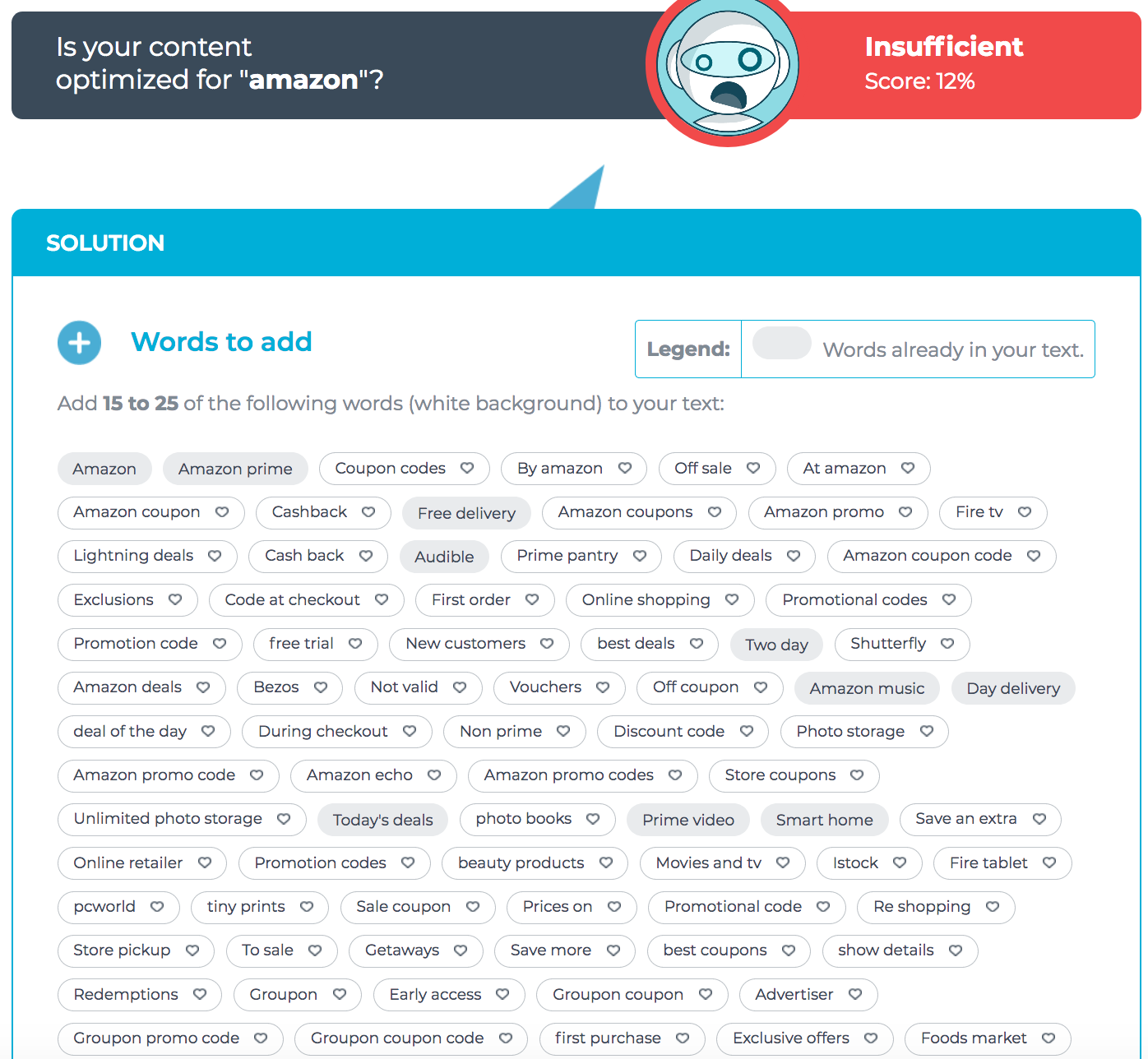
Text Optimizer shows you which subtopics are missing from your current content, allowing you to expand your piece and create something more in-depth. It works great for creating longer-form content, including e-books and whitepapers.
Related Content: 37 Life-Changing Leadership Books You Need to Read ASAP
4) Videos
More and more videos based on text content have been showing up on YouTube and Vimeo lately. These are usually just tutorials, sometimes sideshow-style videos. Either way, they work well and offer a more visual way to get a point across. People who prefer to watch or listen to content will like it and it gives you a new demographic to target.
You can make a video with nothing more than a voice over or even a text representation of your post. If you really want to get professional you can do an actual tutorial, using either a video capture of you showing how something is done on your computer or through a recording of you doing something in real life. Video sites like YouTube and Vimeo are perfect for hosting them, and it may gain a lot of attention this way.
- Turn this article: From Zero-Idea to a Hero Article in 6 Steps (as you can see, I did a lot of repackaging of this article!)
- Into this video: How to Create a High-Ranking Well-Shared Article Each Time: Step-by-Step
Tools:
- Lumen5 is probably the fastest way to turn your text content into a video. It’s semi-automated but you can edit images and text in the video if you choose to.
- For repackaging how-to articles, Placeit is probably the easiest tool that provides the best video templates; the slideshow feature is probably best for repackaging:
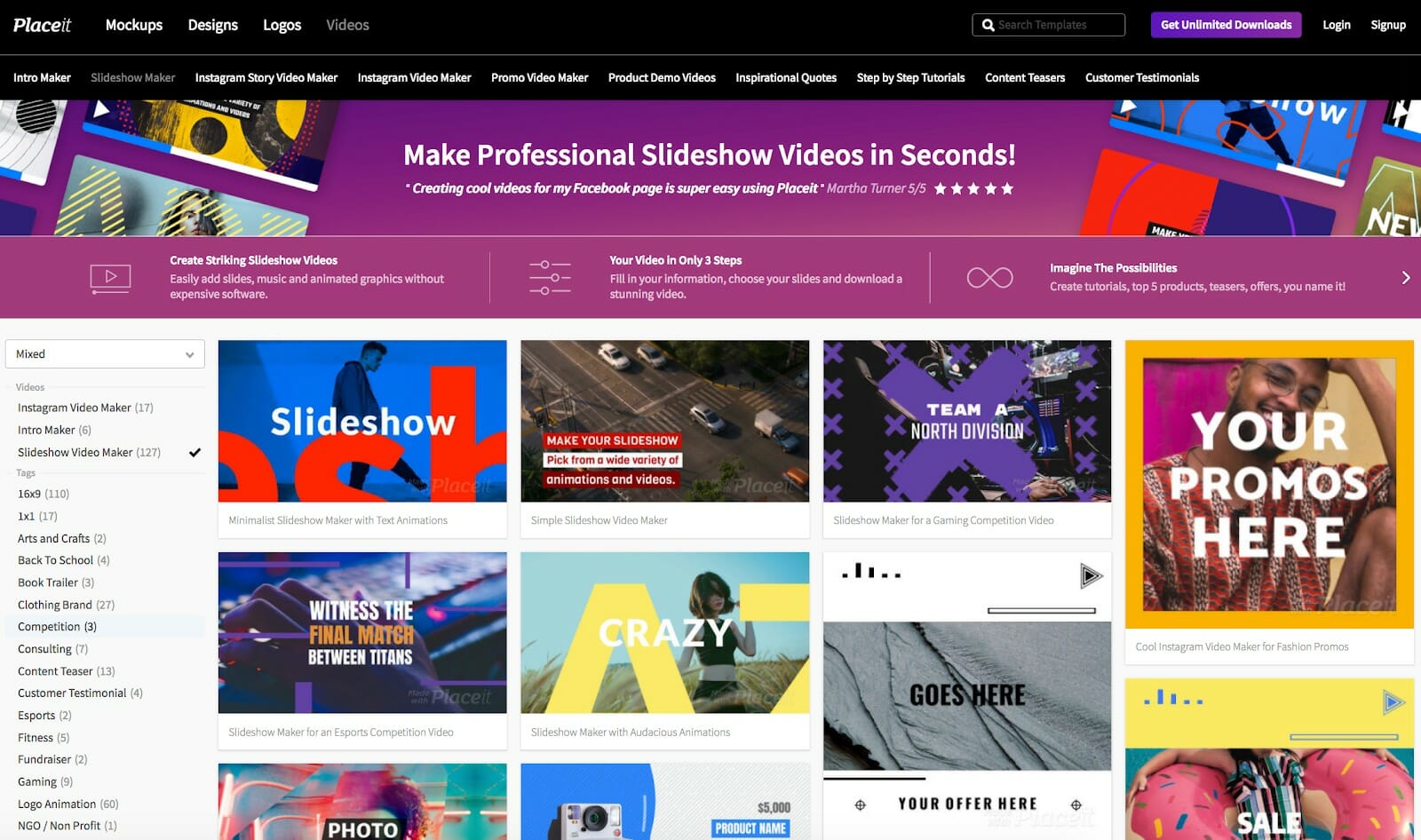
Dive Deeper:
- 20 Pre-Production Tips to Create Successful Video Content
- 8 Videos You Can Generate from One Interview with Your CEO
- 12 Engaging Types of Video Content that Viewers Love to Watch
5) Podcasts
You can also create podcasts in which you can:
- Read audio versions of posts
- Have an entire show to discuss specific topics (like Marketing School)
- Interview guests who are experts on these topics
- Or anything else you might desire.
Plenty of readers are short on time, so having an alternate way to enjoy content that is more passive works well to keep their attention. For example, they can listen to your podcast while driving to work or going out for a run.
Consider offering your posts in a podcast form. All it takes is a simple recording of you reading off the content. You can offer it as a download or have a media player on the site that lets them listen to multiple posts in a row without taking the time to queue them up themselves:
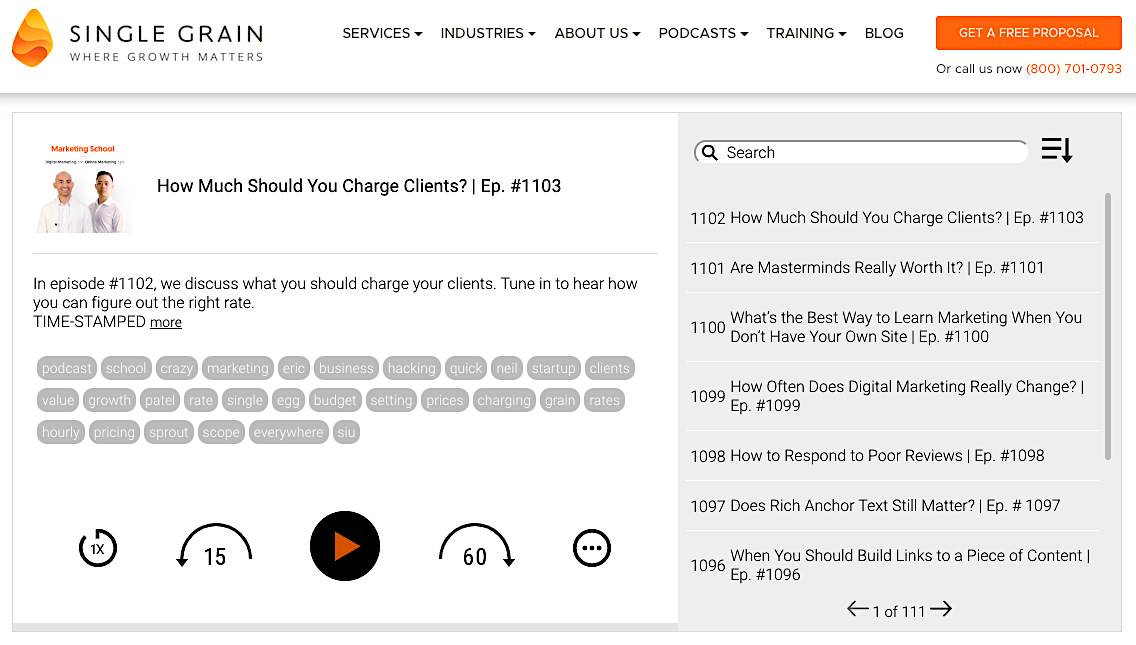
Tools:
There are plenty of text-to-speech tools out there, but even with natural speech processing and artificial intelligence algorithms in place, the audio quality still leaves much to be desired. So the best-case scenario is to read your own articles or hire a high-quality voice-over from sites like Fiverr.
- Here are lots of plugins that allow your blog readers to listen to your podcast right on your site.
Dive Deeper: Why I Decided to Start Podcasting
Marketing all Your Repackaged Assets
My favorite aspect of content repackaging is that it allows you to experiment with many content formats and identify your own best-working engagement tactics.
As with any other content marketing strategy, it’s all about consistency here. Develop a habit of creating 2-3 additional content assets whenever you publish a new article.
Any new article plan may look something like this:
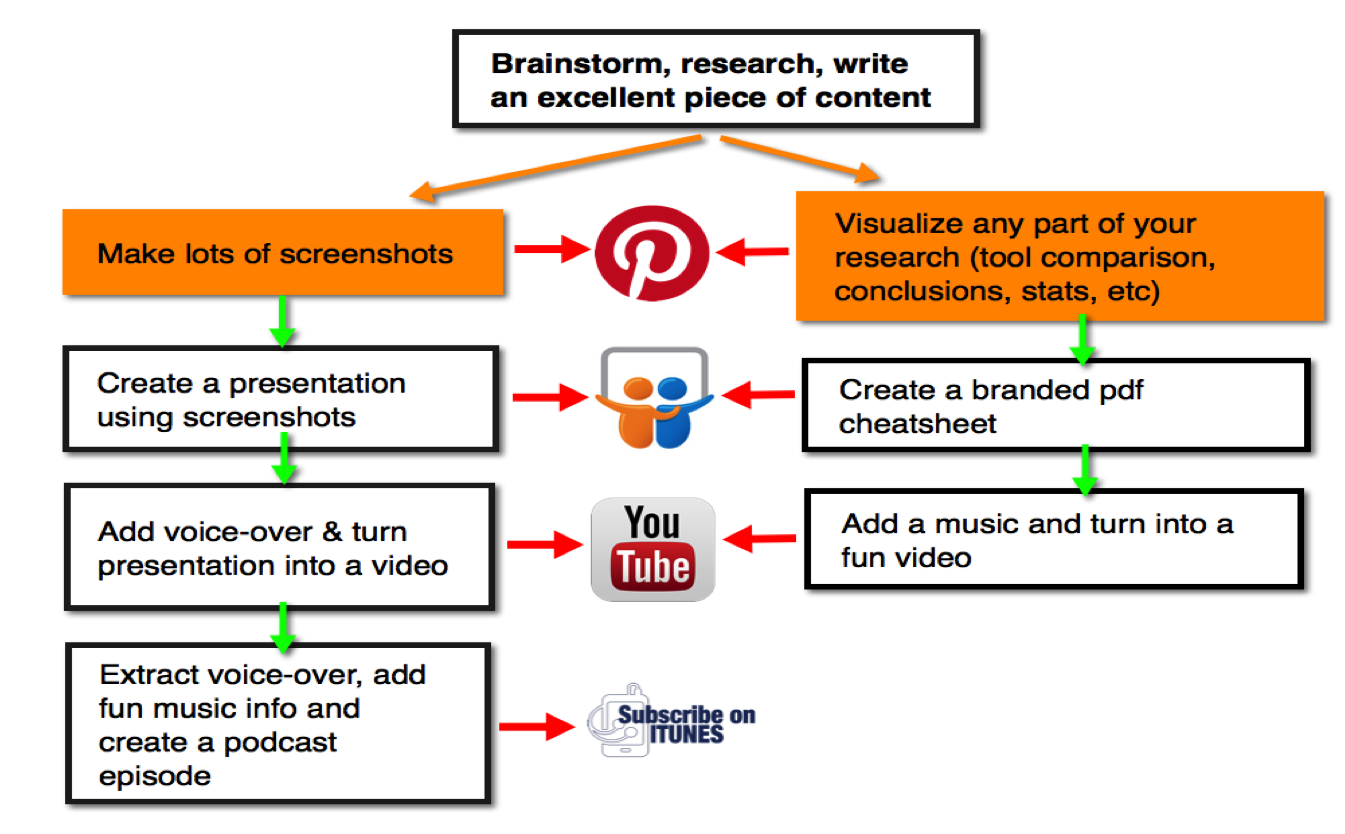
Note: For each asset you create from an initial blog post, make sure to come up with slightly different headlines to keep your marketing varied and natural. You don’t want to stuff your social media channels with the exact same message promoting many different content assets. Here are a lot of ways to diversify your headlines.
Now, your task is to market all these new off-site assets (YouTube, SlideShare, iTunes, etc.) on social media.
Dive Deeper:
- Why Content Marketing Should Always Be 20% Creation and 80% Promotion
- 9 Tips to Take Your Blog Content from Average to Awesome
Streamline the Process Using ContentCal
The more content assets you publish around the web, the more marketing they all require. It’s hard to organize but it’s the key to success: You need to spend more time promoting content than creating it.
ContentCal is a handy editorial calendar that can help your whole team unite around one common goal: Create and promote diverse content assets.
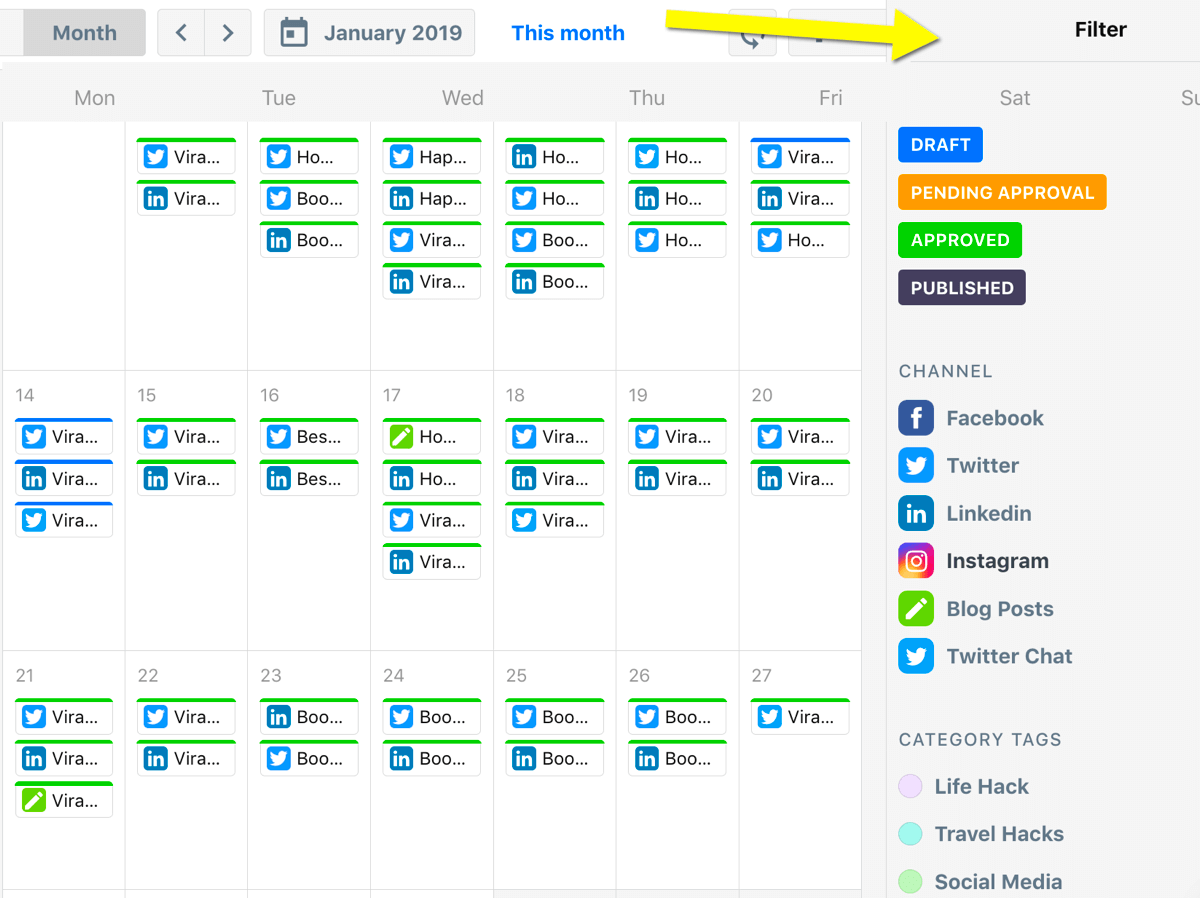
You can assign moderators as an additional quality assurance measure for them to approve updates that go out to your brand’s public feeds. They can also exchange comments with other users:
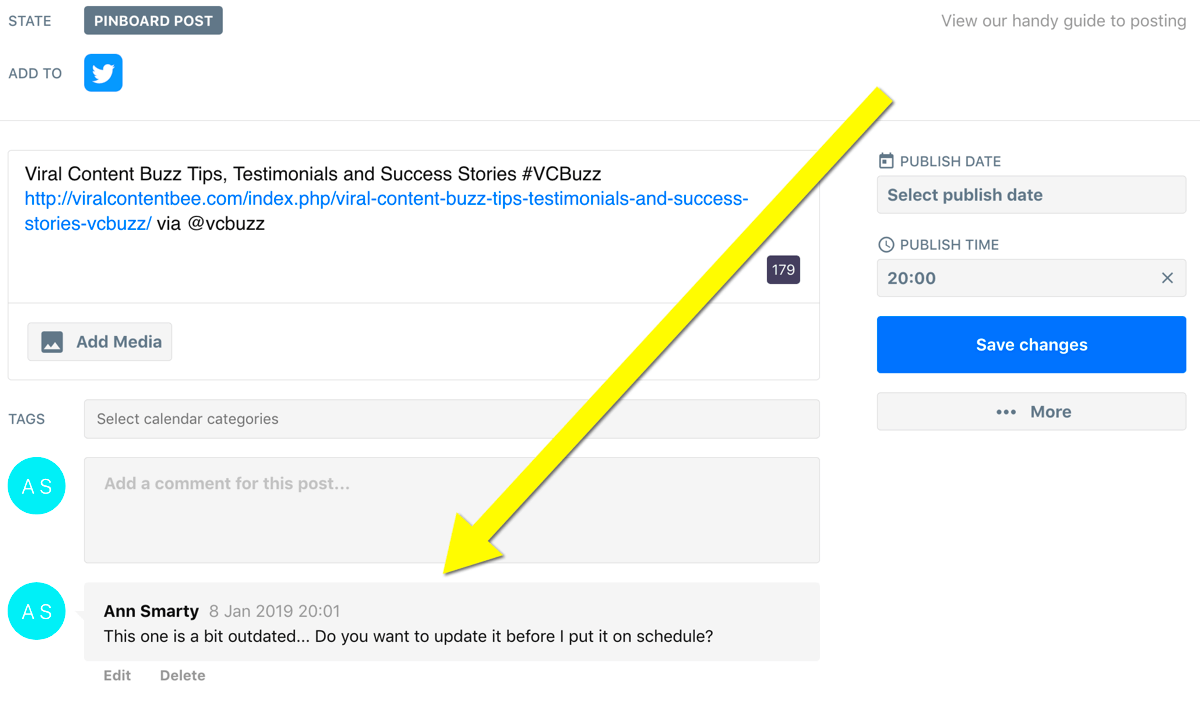
Promote Your Repackaged Assets On-Site Using the Smart Bot
Another idea is to use artificial intelligence (i.e. chatbot marketing) to let technology deliver your repackaged content assets to your site users exactly when they need them.
Alter is probably the simplest smart chat technology you can find out there. It’s easy to set up and configure, and it’s also self-learning, so it will perform better and better the more you use it. You can use it to grow your email list and then set up your email marketing automation platform to send your repackaged assets on a regular basis. Here’s more on how to set up your newsletter to work on auto-pilot.
The beauty of using Alter over standard opt-in forms is that:
- it looks much more user-friendly (your readers are likely to enjoy interacting with the bot)
- it uses artificial intelligence (so it will know when your readers need help and what exactly may help them)
- it won’t give up suggesting to your readers more and more ways to engage – here’s Alter suggesting that my readers check out my YouTube channel:
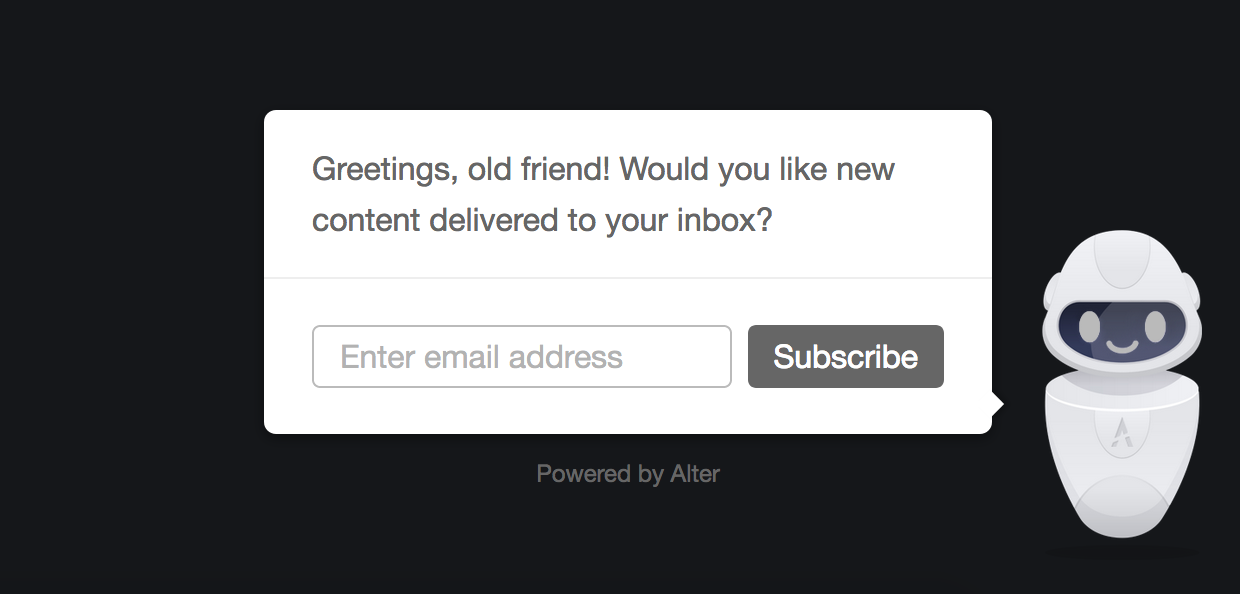
Dive Deeper:
- Why Chatbots Are a Must-Have for Businesses (and How to Build One!)
- How to Build a High-Performance Content Marketing Strategy
- How to Actually Track Your Content Marketing Success
- 7 Content Marketing Hacks That’ll Crush it in 2019
- How Writing One Piece of Remarkable Content Can Change Your Business…and Your Life
Add Your Best Assets to Viral Content Bee
Viral Content Bee (disclaimer: this is the project I founded) is a free platform that puts your content in front of eager social media users who will share your content with their following. The platform has strict rules for social media accounts that are allowed to share and content that can be shared, but it does allow YouTube videos and SlideShare presentations to be promoted, provided that they are not promotional.
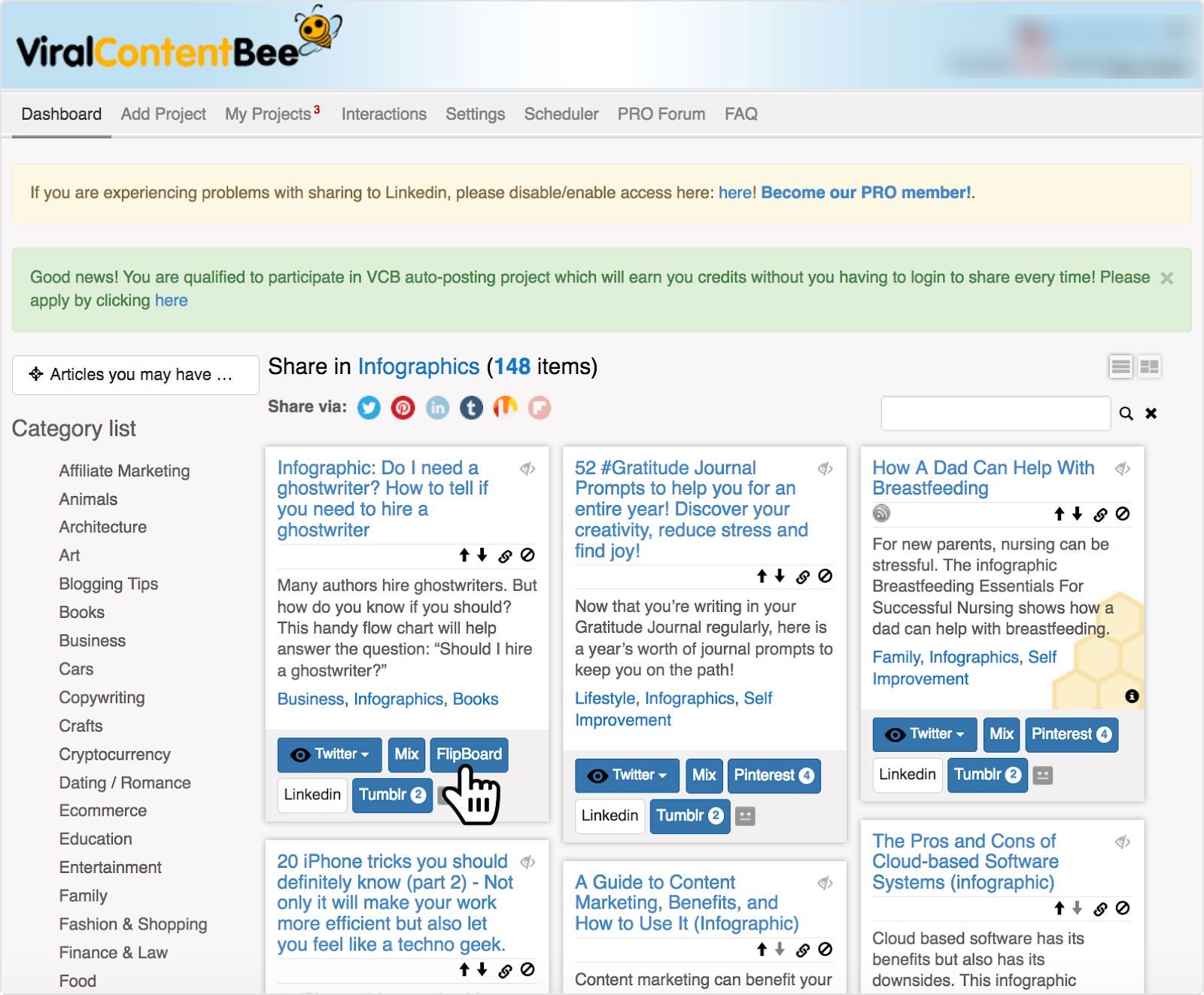
Viral Content Bee users will be happy to share your visualized and repackaged assets to their own followers. You can also create a separate folder inside VCB for your multi-format content assets to better organize them.
Dive Deeper:
- 30 Actionable Content Marketing Tips for Digital Marketers
- 44 Must-Have Marketing Tools for any Business in 2019
- 20 AI Tools to Scale Your Marketing and Improve Productivity
- [Case Study] The Content Sprout Method: How to Use Strategic Content Marketing to Grow Your Traffic From 0 to Millions
Curate Your Digital Assets
Finally, content curation is a great way to both organize your content and create a new traffic and brand awareness channel. I mainly use these two platforms to curate content assets (both on- and off-site) that I need to keep an eye on and re-market on a later basis:
- Paper.li: This is a semi-automated curation tool that collects and tweets your assets.
- Flipboard: This allows you to create a separate magazine where you can add your repackaged multi-format content assets for your team and audience to access and spread around.
Takeaways
- Content repackaging is the content productivity tactic that allows you to create more diverse content assets based on your new or existing text content.
- The main aspect of content repackaging is that each new content aspect will add value of its own.
- You can turn text content into infographics, videos, presentations, e-books, videos and podcasts.
- More content assets mean more marketing efforts. Use curation tools to keep your assets together as well as organize social media marketing using ContentCal and Viral Content Bee.
- Set up an email automation campaign to deliver your content assets to your readers’ inboxes and use Alter to get more people subscribe to your list.



